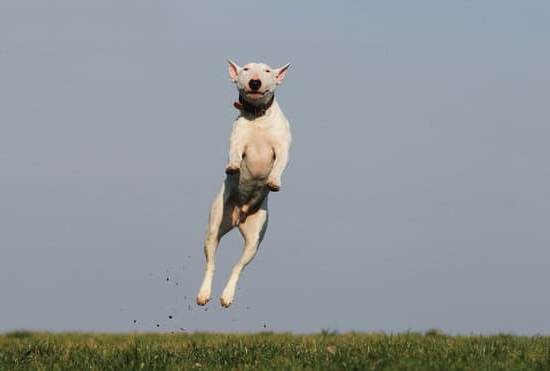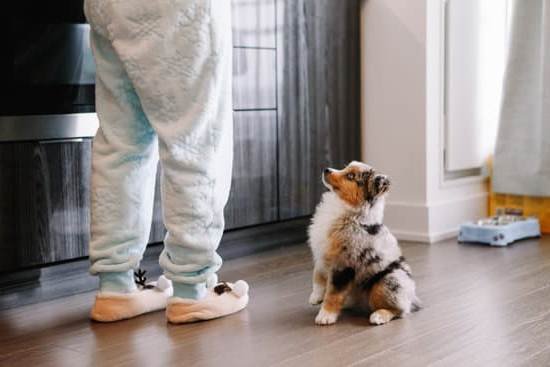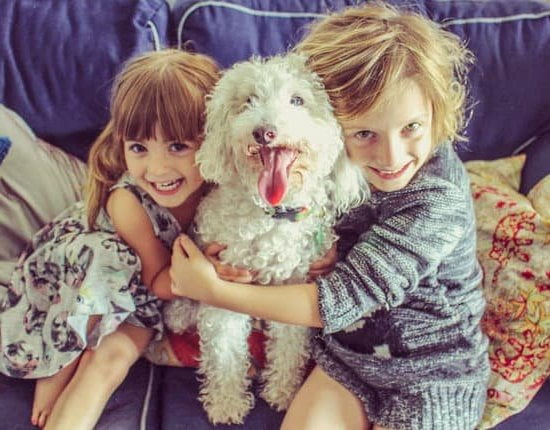Training your dog to pee outside is an essential part of responsible pet ownership. Not only does it help keep your home clean and odor-free, but it also ensures that your furry friend develops good bathroom habits. In this article, we will explore the best methods for successfully training your dog to relieve themselves outdoors.
Understanding your dog’s instincts and behavior is crucial when it comes to potty training. Dogs are naturally den animals and prefer to keep their living spaces clean. By tapping into this instinct, you can effectively teach them to do their business outside rather than indoors.
One of the key aspects of successful potty training is setting a regular feeding and potty schedule. This helps regulate your dog’s bowel movements and makes it easier for them to understand when and where they should relieve themselves. Additionally, using positive reinforcement, patience, and consistency are vital components of the training process. By following these tips and utilizing the right techniques, you can ensure a smooth transition for your pup from indoor accidents to outdoor success.
Understanding Your Dog’s Instincts and Behavior
When it comes to training your dog to pee outside, it is important to understand their instincts and behavior. Dogs are naturally den animals, which means they prefer to eliminate waste in a place that is separate from where they eat and sleep. Understanding this instinct can help you in the training process, as you can use it to your advantage when teaching your dog to pee outside.
Additionally, it’s crucial to pay attention to your dog’s body language and behavior. Most dogs will exhibit certain signs when they need to go potty, such as sniffing around or circling a specific area. By recognizing these cues, you can take your dog outside at the appropriate times, increasing the chances of successful potty training.
To further understand your dog’s instincts and behavior regarding peeing outside, consider researching the breed-specific traits and tendencies. Different breeds may have varying needs and preferences when it comes to potty training, so being aware of these differences can be beneficial for a more effective training process.
- Observe your dog’s body language for signs that they need to go potty
- Research breed-specific traits related to potty training
- Take advantage of your dog’s natural den animal instincts
Picking the Right Spot for Your Dog to Pee Outside
The key to successfully training a dog to pee outside is picking the right spot for them to relieve themselves. Dogs are creatures of habit and establishing a designated area for them to go potty can greatly aid in the training process. When choosing the perfect spot, consider your dog’s preferences, the accessibility of the area, and the overall safety and cleanliness of the location.
It’s important to take into account your dog’s preferences when selecting a spot for them to pee outside. Some dogs may prefer grassy areas, while others may feel more comfortable on gravel or mulch. Observe your dog’s behavior during potty breaks and take note of where they naturally gravitate towards. This will give you clues as to what type of environment they prefer for going potty.
Accessibility is another crucial factor when choosing a spot for your dog to pee outside. The chosen area should be easily accessible from your home, especially during extreme weather conditions. It’s also important to pick a place that is not too far away, as this can become inconvenient for both you and your pet.
Furthermore, safety and cleanliness should be top priorities when selecting a spot for your dog to pee outside. Avoid areas near busy roads or hazardous materials, such as chemicals or sharp objects. Additionally, make sure that the area is free from any harmful plants or substances that could potentially harm your dog.
| Factor | Consideration |
|---|---|
| Preferences | Observe your dog’s behavior and note their natural preferences. |
| Accessibility | The chosen area should be easily accessible from your home. |
| Safety and Cleanliness | Avoid areas near busy roads or hazardous materials. |
Using Positive Reinforcement and Rewards
When it comes to training your dog to pee outside, positive reinforcement and rewards can be extremely effective tools. Dogs respond well to praise and rewards, so using these techniques can help them understand what behavior is expected of them. One common method is using treats as a reward for successful outdoor peeing. When your dog eliminates outside, immediately give them a small treat and plenty of verbal praise. This will help them associate peeing outside with positivity.
In addition to treats, you can also use other forms of positive reinforcement such as petting, playing, or offering their favorite toy. By making the experience of peeing outside enjoyable for your dog, they will be more inclined to continue doing so in the future. Remember to keep the rewards immediate and consistent to reinforce the desired behavior effectively.
Another important aspect of using positive reinforcement and rewards is timing. It’s crucial to offer the reward right after your dog has finished peeing outside, as delayed reinforcement might confuse them. You want your dog to make a clear connection between peeing in the right spot and receiving a reward.
It’s essential to remain patient throughout this process since every dog learns at their own pace. Some dogs may grasp the concept quickly and require minimal training, while others may take longer to fully understand what is expected of them. Consistency in using positive reinforcement and rewards will ultimately lead to successful outcomes in training your dog to pee outside.
| Positive Reinforcement Techniques | Benefits |
|---|---|
| Treats | Improves association with outdoor peeing |
| Petting/Playing | Makes the experience enjoyable for the dog |
| Immediate Rewards | Reinforces desired behavior effectively |
Being Consistent and Patient With the Training Process
Consistency and patience are key components when it comes to training your dog to pee outside. It is important to understand that every dog learns at their own pace, and it may take time for them to fully grasp the concept of peeing outdoors. Consistency in your training methods and being patient with your dog will ultimately lead to successful results.
When embarking on the journey of training your dog to pee outside, it is crucial to establish a routine and stick to it. By consistently taking your dog outside at the same times every day, such as after meals or playtime, you are reinforcing the behavior of peeing outdoors. Additionally, using the same designated spot each time can help signal to your dog that this is where they should relieve themselves.
It’s also important to be patient throughout the training process. Dogs may have accidents indoors, especially in the beginning stages of training. Instead of becoming frustrated, remain calm and continue with the training. Remember that accidents are part of the learning process, and scolding your dog for them may cause confusion and stress, hindering their progress.
Consistency and patience go hand in hand when teaching your dog to pee outside. By maintaining a regular schedule and remaining patient with your pet, you are setting them up for success in their potty training journey. Your perseverance will pay off as your furry friend learns where it is appropriate to relieve themselves, leading to a happier and harmonious living environment for both you and your beloved pet.
Dealing With Accidents and Setbacks
Stay Calm and Patient
Accidents are bound to happen, especially during the early stages of training your dog to pee outside. It’s important to remain calm and patient when accidents occur. Yelling or punishing your dog will only confuse and scare them, making the training process even more difficult. Instead, clean up the mess without making a big fuss, and continue with the training as usual. Remember that dogs respond best to positive reinforcement, so staying patient and understanding is key.
Reassess Your Training Approach
If you find that accidents are becoming frequent and your dog is not making much progress in learning to pee outside, it may be time to reassess your training approach. Take a step back and evaluate if you’re being consistent with the schedule, using positive reinforcement effectively, and providing enough opportunities for your dog to go outside. Sometimes a simple adjustment in your training methods can make a big difference in your dog’s learning process.
Seek Professional Help if Needed
In some cases, dealing with accidents and setbacks might become overwhelming despite your best efforts. If you feel like you’ve tried everything and still can’t make progress with training your dog to pee outside, it may be time to seek professional help.
A certified dog trainer or behaviorist can assess the situation and provide personalized guidance on how to overcome any obstacles you may be facing. Don’t hesitate to seek assistance if you feel like you’re at a loss – sometimes an expert’s perspective can make all the difference in successfully training your dog.
Additional Tips and Tricks for Successful Training
Training your dog to pee outside is an essential part of pet ownership, and there are several additional tips and tricks that can help make the training process more successful. Whether you have a new puppy or an older dog, these strategies can aid in reinforcing positive behavior and building a strong routine for them.
Schedule Regular Playtime
In addition to setting a regular feeding and potty schedule, it is important to incorporate regular playtime into your dog’s routine. Exercise and play can help stimulate their bowels, making it more likely for them to need to go potty. Consider taking your dog for a short walk before their designated potty time to encourage them to relieve themselves outside.
Use Verbal Cues
Using verbal cues can also aid in training your dog to pee outside. Choose a specific phrase or word that you will use every time you take them outside to go potty. Over time, they will begin to associate this cue with the act of eliminating waste, making it easier for them to understand what is expected of them.
Keep Up With Positive Reinforcement
Consistency is key when it comes to training your dog, so make sure to keep up with positive reinforcement and rewards. Whenever your dog successfully pees outside, be sure to praise them and give them a treat. This positive association will encourage them to continue peeing outside instead of inside the house. Remember that patience is crucial in the training process, as accidents are inevitable before your dog fully learns where they should be doing their business.
By incorporating these additional tips and tricks into your training routine, you can increase the likelihood of success when teaching your dog to pee outside. Remember that each dog is unique, so you may need to adjust these strategies based on your pet’s individual needs and behavior. With patience and consistency, you can effectively train your furry friend while strengthening the bond between you both.
Seeking Professional Help if Necessary
Training your dog to pee outside is an essential part of responsible pet ownership. It not only helps to keep your home clean and odor-free, but it also promotes good behavior and bonding between you and your furry friend. Understanding your dog’s instincts and behavior is the first step in successfully training them, as this will help you anticipate their needs and respond accordingly.
Setting a regular feeding and potty schedule is crucial in teaching your dog when and where they should relieve themselves. Consistency is key, as it helps to reinforce the desired behavior. Picking the right spot for your dog to pee outside is also important, as this will become their designated potty area. Using positive reinforcement and rewards such as treats or praise can encourage your dog to continue peeing outside.
Moreover, being patient and consistent with the training process is vital, as every dog learns at their own pace. Accidents and setbacks are inevitable during training, but it’s important to remain calm and address these situations with patience and understanding. Additionally, seeking professional help from a certified dog trainer may be necessary if you’re facing difficulties in training your dog to pee outside.
A professional can provide expert guidance tailored to your specific situation, ensuring successful results in no time. Remember that every dog is unique, so the key is finding the method that works best for both you and your furry companion. With dedication, patience, and the right approach, you’ll soon have a well-trained dog that knows exactly where to go when nature calls.
Frequently Asked Questions
How Long Does It Take to Train a Dog to Pee Outside?
The time it takes to train a dog to pee outside can vary depending on the dog’s age, breed, and previous training. Some dogs may learn in a few weeks, while others may take several months.
How Do I Get My Dog to Pee in the Yard?
To get your dog to pee in the yard, establish a consistent routine for potty breaks. Take your dog outside frequently, especially after meals and naps. Use positive reinforcement and reward your dog for peeing in the yard.
How Do I Transition My Dog From Peeing Inside to Outside?
Transitioning a dog from peeing inside to outside requires patience and consistency. Start by gradually moving your puppy’s indoor pee pad closer to the door, then eventually take them outside when they need to go. Use positive reinforcement and be consistent with the outdoor potty breaks to help with the transition.

Welcome to the blog! I am a professional dog trainer and have been working with dogs for many years. In this blog, I will be discussing various topics related to dog training, including tips, tricks, and advice. I hope you find this information helpful and informative. Thanks for reading!





